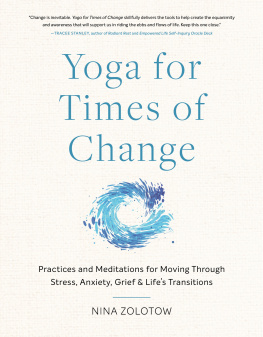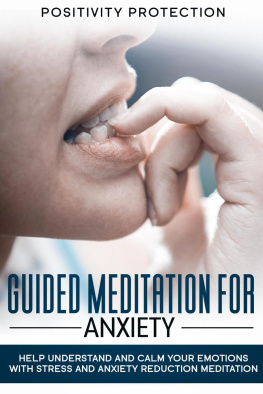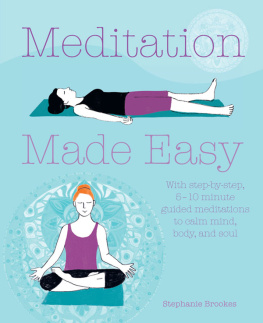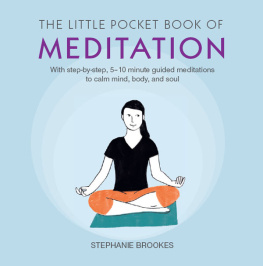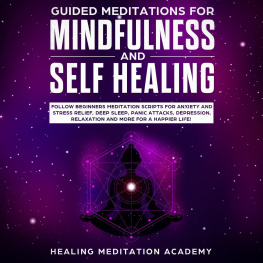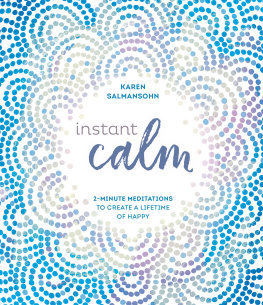THE BEST MEDITATIONS ON THE PLANET
100 TECHNIQUES TO BEAT STRESS,
IMPROVE HEALTH, AND CREATE HAPPINESS
IN JUST MINUTES PER DAY
DR. MARTIN HART AND SKYE ALEXANDER

To my kids at Masconomet Regional, who teach me every day how to laugh and love, and to my fellow staff members, who teach me how to have lunch.
M.H.
To Domino
S.A.
Go into yourself and see how deep the place is from which your life flows.
Rainer Maria Rilke
CONTENTS
INTRODUCTION
DONT JUST DO SOMETHING SIT THERE
INTRODUCTION
DONT JUST DO SOMETHING... SIT THERE
East Meets West
Few Westerners knew much about meditation until 1959, when the Indian teacher Maharishi Mahesh Yogi introduced Transcendental Meditation (TM) to the United States. Based in the Vedic tradition, TM uses a mantra to induce relaxation and transcend thinking. Meditations popularity grew throughout the 1960s, due in part to the influence of the Beatles, who had studied with Maharishi in India. During the next fifty years, Maharishi trained forty thousand teachers, who took the TM technique to more than five million people worldwide. Martin was one of those teachers.
In 1980, Martin traveled to India, where he spent a year instructing more than 1,500 people in the Transcendental Meditation technique, ranging from schoolchildren to scientists to top executives in some of Asias largest corporations, including the chief medical officer of Indias largest bankDeepak Chopras sisterand her two sons. Martin has since branched out into other areas and has developed a unique counseling system called ASAT C.O.R.E. Counseling. To date he has trained more than 1,700 ASAT C.O.R.E counselors through the auspices of the American Society of Alternative Therapists (ASAT), which he founded in 1990. Combining meditation with a specific counseling approach to address hidden blockages and templates, these counselors report remarkable results with clients from all walks of life.
In the latter half of the twentieth century, other forms of meditation spread through the West as well. Insight or mindfulness meditation, for instance, brings you into a deep awareness of the present moment so you can fully experience the here and now. Visualization and guided imagery use mental pictures to encourage body-mind relaxation or to generate specific results. Yoga combines postures (asanas) and breathing to shift awareness into a meditative state. More than twenty million Americansone in elevennow meditate regularly. In this book, we present 100 different meditations designed for a wide range of objectives, from lowering blood pressure to improving athletic performance to increasing your IQ.
A CURE FOR WHAT AILS YOU
As meditations popularity expanded, so did research to investigate its effects on the mind and bodyand its potential to aid all sorts of physical, mental, emotional, and societal ills. During the past four decades, more than six hundred studies conducted at 250 universities and medical schools worldwide have verified meditations efficacy. More than 350 scientific and medical journals have published research showing the benefits of meditation for conditions including diabetes, coronary disease, cancer, chronic pain, and more. Most of the research to date has centered on TM, mindfulness (insight) meditation, or a combination of techniques. In this book, we present some of the amazing results of these studies.
In the United States, the National Institutes of Health has provided more than $24 million in grants to investigate the health benefits of meditation. Meditation programs are available at more than 240 hospitals and medical facilities. The University of Massachusetts Medical Schools Center for Mindfulness in Medicine, Health Care, and Society, which grew out of the Stress Reduction Clinic founded more than thirty years ago by Jon Kabat-Zinn, PhD, is the oldest and largest academic medical centerbased stress reduction program in the world. It pioneered the integration of meditation and other mindfulness-based approaches into mainstream medicine and served as the model for more than 200 medical centers in the United States and other countries.
Todays researchers at major universities and medical facilities worldwide continue to discover new ways to utilize meditations therapeutic powers, from promoting stem cell growth to increasing brain size. We may have just begun to tap meditations abilities to heal body, mind, and spirit.
MEDITATION GOES MAINSTREAM
Following his training with Maharishi, Martin traveled to India in 1980, where he was impressed with how eagerly the heads of Indias major corporations pursued meditation training. From top physicists at the Bhabha Atomic Research Center in Bombay (Mumbai) to corporate leaders at Tata Motors and Mahindra and Mahindra, Ltd., hundreds of people enthusiastically sought meditation as a means to finding their own inner reservoirs of peace and well-being. The ironic thing was that a Westerner reconnected them to a practice deeply rooted in their own culture.
Today, an increasing number of businesses offer meditation classes for their employees, including companies such as Apple Computer, Yahoo, Google, Raytheon, McKinsey & Company, Deutsche Bank, AOL Time Warner, and Hughes Aircraft.
As employee stress mounts due to economic challenges and increased work demands, meditation seems the logical answer for companies seeking to rein in costs, boost productivity, and keep good employees happy. Stress-related problems cost companies about $200 billion a year, according to the National Institute for Occupational Safety & Health. If businesses were clever, says Harvard Medical Schools Herbert Benson, MD, best-selling author of The Relaxation Response, what they would do is simply put time aside [and have] a quiet room for people to carry out a meditative behavior of their choice.
In addition to businesses, public schools in the U.S. are beginning to teach meditation to children and teens. A study by the Medical College of Georgia in 2003 found that meditation helped students lower stress, get better grades, and improve their interpersonal relationships.
Meditation could have a positive impact on crime, too. When 1,350 inmates at six Massachusetts prisons practiced meditation, hostility diminished and their self-esteem improved.
Even the U.S. military is exploring meditation as a way to treat post-traumatic stress disorder and traumatic brain injury. The Defense Department spent $5 million in 2008 researching meditation and other complementary healing modalities.
Clearly, meditation has moved out of the ashram and into the mainstream. As clinical research and personal experience show, meditations benefits are diverse, vast, and readily available to everyone who seeks them. All it takes is a few minutes a day and a desire to enjoy a healthier, happier life.
We hope the meditations offered in this book will assist you in that pursuit.
PART 1 WHAT MEDITATION CAN DO FOR YOU

M editation only takes a short period of time each day, costs absolutely nothing, requires no special equipment or accoutrements, and can be done successfully by anyone, anywhere, anytime. Meditation could be the single most valuable tool we have available to heal ourselves and our planet.
During the past two decades, hundreds of scientific studies have been conducted at more than 250 universities and research facilities internationally to examine meditations efficacy. Although devotees of the practice may assert that meditation can do everything from create world peace to make you a better lover, clinical research clearly shows that meditations benefits are substantial and far-reaching. Here are just some of the amazing results top scientific and medical researchers have linked to meditation:


